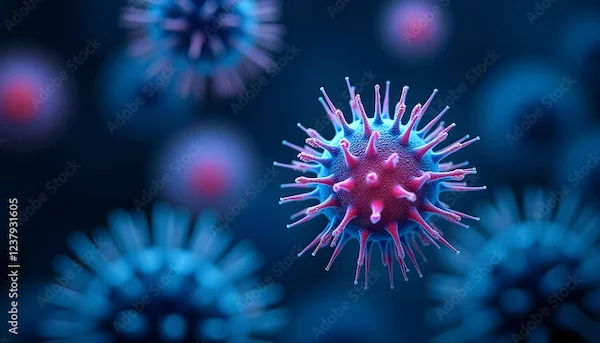Guide to Thigh Pain Reasons
Discover the cause of your thigh pain. Comprehensive guide covering common reasons: muscle strain, nerve issues (sciatica), blood clots, and bone problems. Get informed about symptoms and when to see a doctor.

Written by Dr. J T Hema Pratima
Reviewed by Dr. Rohinipriyanka Pondugula MBBS
Last updated on 25th Oct, 2025

Introduction
Thigh pain can show up as a dull ache after a long day, a sharp stab when you climb stairs, or a burning sensation along the outer thigh. Because the thigh connects your hip and knee and houses powerful muscles, major nerves, and key blood vessels, the reasons for thigh pain range from simple muscle strains to conditions that need urgent care. If you’ve been Googling “thigh pain reasons,” you’re not alone—this guide translates medical jargon into clear, practical advice for the general public.
In this comprehensive article, you’ll learn how to identify the type and location of your thigh pain, the most common causes (from hamstring strains to sciatica, meralgia paresthetica, and deep vein thrombosis), what to try at home, when to see a doctor, and how doctors diagnose and treat thigh problems. You’ll find examples, data, and expert tips based on leading medical sources. If symptoms persist beyond two weeks or include red flags, consult a doctor online with Apollo 24|7 for further evaluation. Let’s help you pinpoint the reasons behind your thigh pain and map a plan for safe, effective relief.
Map Your Thigh Pain: Location, Onset, and Sensation
Understanding where and how your thigh hurts is the fastest way to narrow down the reasons for thigh pain. Start with three clues:
- Where is the pain? Front (quadriceps/anterior thigh), back (hamstrings/posterior thigh), inner (adductors/groin), or outer thigh (lateral).
- How did it start? Sudden during a sprint or gradual after weeks of sitting or walking more.
- What does it feel like? Sharp, dull ache, burning, tingling/numbness, cramp, or tightness.
Anatomy 101: Muscles, Nerves, Vessels, and Joints
- Muscles: Quadriceps (front), hamstrings (back), adductors (inner), and tensor fascia lata/IT band (outer).
- Nerves: Sciatic nerve runs behind the hip down the back of the thigh; lateral femoral cutaneous nerve supplies outer thigh sensation; femoral nerve runs to front thigh.
- Vessels: Femoral artery and vein travel through the groin and thigh.
- Joints: Hip and knee refer pain to the thigh; the lumbar spine can send nerve pain into the thigh.
Pain Patterns: Sharp vs. dull, burning, tingling, cramping
- Burning and tingling on the outer thigh suggests meralgia paresthetica.
- Deep ache with swelling could mean a muscle strain or, if accompanied by warmth and calf swelling, a DVT.
- Cramping or tightness at night often relates to dehydration, electrolyte imbalance, or overuse.
Front vs. Back vs. Inner vs. Outer thigh clues
- Front (anterior): Quadriceps strain, hip osteoarthritis (often with groin pain).
- Back (posterior): Hamstring strain; sciatica can radiate here.
- Inner (medial): Adductor strain, sports hernia.
- Outer (lateral): IT band irritation; meralgia paresthetica (burning/numbness).
- Related terms to watch for: upper thigh pain at night, inner thigh pain near groin causes.
Unique insight: Use a “pain diary” for 3–5 days—note time, activity, and pain quality. Patterns (e.g., pain after sitting vs. after hills) can clearly differentiate nerves from muscle or vascular causes.
Consult a Top General Physician
Muscle and Tendon Reasons
Muscle and tendon issues are among the most common thigh pain reasons, particularly after a sudden increase in activity or an awkward move.
Hamstring strain or tendinopathy
- Often occurs during sprinting or sudden acceleration. You may feel a pop and immediate posterior thigh pain; bruising can appear within days.
- Chronic hamstring tendinopathy causes stiffness and pain with prolonged sitting and uphill running.
- Recovery ranges from 2–6 weeks for mild strains and longer for severe tears; eccentric strengthening (Nordic curls) improves outcomes [AAOS; 5].
- Long-tail keywords: hamstring strain recovery time, thigh pain after running.
Quadriceps strain and tendinopathy
- Sudden pain in the front of the thigh during kicking or jumping suggests a quad strain.
- Quadriceps tendinopathy develops gradually, with morning stiffness and pain during stairs or squats.
- Initial care: RICE for 24–72 hours, relative rest, then gradual strengthening with pain-guided progression.
Adductor (groin) strain and inner thigh pain
- Common in cutting sports; pain localizes along the inner thigh near the pubic bone.
- Gentle isometric adductor squeezes and hip stability work aid recovery. Avoid aggressive stretching early to prevent reinjury.
IT band/outer thigh overuse
- Runners may develop aching along the outer thigh from increased mileage or downhill running.
- Address hip/glute strength and stride mechanics; a brief form check with a physical therapist can prevent recurrence.
Overuse, dehydration, and night cramps
- Night cramps in the thigh can improve with hydration, electrolyte balance, calf/hamstring stretching before bed, and consistent activity.
- Unique insight: A “10% rule” for training (no more than 10% weekly increase in load/distance) is a simple safeguard against most overuse-related thigh pain reasons.
Nerve-Related Reasons
Nerve problems can create burning, tingling, numbness, or electric shock sensations, often radiating.
Sciatica/radiculopathy from the lower back
- Irritation of nerve roots (L2–L4 front thigh, L5–S1 back of thigh) can cause radiating pain, tingling, and sometimes weakness. Coughing or prolonged sitting may worsen symptoms .
- Risk factors include prolonged sitting, disc herniation, or spinal stenosis. Most cases improve with time, activity modification, and targeted exercises.
- Data: Most sciatica episodes improve within 6–12 weeks with conservative care; imaging is reserved for red flags or persistent deficits.
Meralgia paresthetica (outer thigh burning)
- Entrapment of the lateral femoral cutaneous nerve causes burning, numbness, and tingling on the outer thigh. It’s often worse with tight belts, jeans, or obesity, and during pregnancy .
- Prevalence is modest, and many cases respond to clothing changes, weight management, and nerve-friendly stretches; some require injections.
LSI: meralgia paresthetica symptoms and relief, burning pain outer thigh.
Femoral nerve irritation and thigh weakness
- Can cause front thigh pain, weakness in knee extension, and reduced knee reflex.
- Causes include pelvic/retroperitoneal compression, diabetes-related neuropathy, or surgical complications. Medical evaluation is essential for new weaknesses.
Unique insight: A quick, home “clue test”—if thigh pain worsens with spinal flexion/extension or prolonged sitting but eases when walking, think nerve origin; if pain is localized and tender to touch without tingling, think muscle/tendon.
Blood Vessel Reasons
Deep vein thrombosis (DVT) and swelling
- A blood clot in the leg vein can cause new unilateral thigh pain, swelling, warmth, and redness; risk rises with recent surgery, immobilization, cancer, pregnancy, or hormonal therapy.
- DVTs occur in roughly 1 per 1,000 adults per year; prompt diagnosis and anticoagulation reduce risk of life-threatening pulmonary embolism.
- Diagnosis often uses a clinical score (Wells), D-dimer blood test, and ultrasound.
- If you have sudden thigh swelling, warmth, and pain—especially in one leg—seek emergency care. Do not massage the area.
Peripheral artery disease (PAD) and walking pain
- Reduced blood flow from arterial narrowing causes exertional thigh pain (claudication) that resolves with rest; risk factors include smoking, diabetes, high cholesterol, and age .
- PAD may signal widespread vascular disease—medical evaluation can prevent heart attack or stroke.
Bone and Joint Reasons
Hip osteoarthritis and labral issues
- Hip OA commonly causes groin pain that can radiate to the front of the thigh and even the knee; stiffness is worse in the morning or after sitting.
- Labral tears can produce groin/thigh pain with clicking or catching; athletes and those with hip impingement are at higher risk.
- Activity modification, weight management, physical therapy, and anti-inflammatories often help; injections or surgery may be options for persistent cases.
Stress fractures and fractures
- Overuse stress fractures of the femur are less common than in the tibia or foot but present as deep, focal thigh pain worse with weight bearing; sudden increase in training, low bone density, or poor nutrition are risk factors.
- A fall with severe pain and inability to bear weight suggests a fracture—seek urgent care.
Referred pain from the hip or spine
- Knee issues can refer pain to the thigh; conversely, lumbar spine problems often radiate to the thigh.
- Comprehensive assessment prevents chasing the wrong site of pain.
Unique insight: The “C-sign” (cupping the hand in a C-shape over the groin) is a classic patient gesture indicating intra‑articular hip pathology, which often radiates to the front thigh.
Diagnosis and Tests: What to Expect?
History and physical exam: key maneuvers
- Clinicians map pain location, onset, and aggravators. Strength testing (quads/hamstrings/adductors), flexibility, and special tests (SLR for sciatica, FADIR/FABER for hip) help localize the cause.
- Vascular checks include pulses, skin temperature, swelling, and Homan’s sign (not reliable alone).
- Neurologic checks evaluate sensation, reflexes, and myotomes.
Imaging: ultrasound, X-ray, MRI, and nerve tests
- Ultrasound: fast, no radiation; used for DVT evaluation and soft tissue tears.
- X-ray: bone alignment, fractures, arthritis.
- MRI: detailed imaging for muscle/tendon tears, stress fractures, labral tears, and nerve root compression.
- Nerve conduction studies/EMG: assess neuropathies and radiculopathy.
Lab tests: inflammation, vitamin D, metabolic causes
- D-dimer aids DVT rule-out in low-risk cases; inflammatory markers (CRP/ESR) may be used in suspected infection or inflammatory disease.
- Vitamin D deficiency can predispose to stress injuries; glucose/HbA1c evaluates diabetes-related neuropathy risk.
- If your clinician recommends labs, Apollo 24|7 offers a convenient home collection for tests like vitamin D or HbA1c.
Unique insight: Ask your clinician for a “pathway plan”: if symptoms don’t improve in 2–3 weeks, what’s the next step (e.g., imaging, PT, specialist)? Having this roadmap reduces uncertainty and speeds recovery.
Relief and Treatment Options
Home care: RICE, gentle mobility, heat/ice, OTC meds
- First 48–72 hours for acute strains: Rest, Ice 15–20 minutes, Compression, Elevation. Then transition to gentle motion to prevent stiffness.
- Heat can relax tight muscles; ice helps swelling after activity. Nonsteroidal anti-inflammatories (if appropriate for you) reduce pain, but use the lowest effective dose and avoid it if you have GI, kidney, or heart issues.
- Gentle nerve glides (for sciatica) and specific stretches for hip flexors/hamstrings can help; avoid aggressive stretching during acute muscle tears.
Medical care: physical therapy, injections, procedures
- Physical therapy emphasizes graded loading, eccentric strengthening, and movement retraining for muscle/tendon issues; for nerve problems, PT can address posture and core/hip stabilization.
- Injections: corticosteroids (for bursitis/nerve entrapments), hyaluronic acid/PRP in select cases; evidence varies—decisions are individualized.
- For DVT, anticoagulation is the mainstay; PAD management includes supervised exercise, medications, and sometimes revascularization.
- Surgery is reserved for significant tears, fractures, or refractory hip labral tears/impingement.
Recovery timelines and return to activity
- Mild muscle strains: 2–6 weeks; tendinopathy: weeks to months; nerve entrapment: variable—may resolve with lifestyle changes.
- Use a pain-guided progression: advance only if next-day soreness stays mild and baseline function improves week to week.
Unique insight: “2 up, 1 back” progression—advance your activity for two sessions, then schedule one lighter session. This planned deload reduces reinjury risk in tendons and muscles.
Prevention and Daily Habits
Training progression, warm-ups, flexibility, strength
Increase mileage or intensity gradually (≤10% per week). Incorporate dynamic warm-ups (leg swings, hip circles) and at least two strength sessions weekly targeting glutes, hips, and core.
Balance quads and hamstrings with eccentric work to lower strain risk.
Desk ergonomics, footwear, and posture
- Long sitting shortens hip flexors and stresses the lower back and outer thigh. Use a chair with hip-knee alignment, take movement breaks every 30–45 minutes, and consider a sit-stand routine.
- Replace worn shoes and match footwear to your activity and arch type; consider a gait analysis if you run regularly.
Weight, nutrition, and hydration
- Adequate protein supports muscle repair; calcium and vitamin D support bone health. Hydration and electrolytes help prevent night cramps.
- For people with diabetes, maintaining glucose control can reduce nerve-related thigh pain risk; discuss HbA1c targets with your clinician.
Unique insight: Micro-break recipe: 60 seconds every 45 minutes—10 calf raises, 10 mini-squats, 10 hip hinges, 10 marching steps, 20 seconds of hip flexor stretch. Tiny, consistent resets beat long, irregular workouts for desk-bound bodies.
When to Seek Care?: Red Flags and Next Steps
Emergency symptoms
Call emergency services or go to urgent care if you have:
- Sudden thigh pain with swelling, warmth, and redness in one leg (possible DVT) .
- Severe pain after a fall, inability to bear weight, or obvious deformity (possible fracture).
- Fever with severe thigh pain or redness (possible infection).
- New weakness, numbness, or loss of bladder/bowel control (possible serious nerve/spine issue) .
Persistent symptoms beyond two weeks
If your thigh pain doesn’t improve with home measures in 10–14 days, or it limits daily activities, seek medical advice. If symptoms persist beyond two weeks, consult a doctor online with Apollo 24|7 for further evaluation, or book a physical visit for an in-person exam and imaging if required.
How Apollo 24|7 can help?
- Rapid access to online clinicians for triage and management.
- Referrals for imaging or physical therapy when needed.
- Home collection for labs such as vitamin D and HbA1c to assess bone and nerve health contributors.
Conclusion
Thigh pain has many possible reasons, from straightforward muscle overload to nerve entrapments and vascular conditions that require urgent attention. Start by mapping where your thigh hurts and what it feels like—those details guide you toward likely causes and the right next steps. For many people, short-term rest, ice, and gentle movement lead to steady improvement, while a smart progression of strengthening helps prevent recurrences. When pain burns or tingles, consider nerve causes like sciatica or meralgia paresthetica; when swelling and warmth affect one leg, think vascular and seek immediate care. Hip and spine problems often refer pain to the thigh, so don’t be surprised if your clinician examines beyond the sore spot.
If your thigh pain isn’t improving after 10–14 days, is getting worse, or is interfering with work or sleep, consult a doctor online with Apollo 24|7 for timely evaluation and guidance. If your condition does not improve after trying these methods, book a physical visit to a doctor with Apollo 24|7. When lab tests are helpful, Apollo 24|7 offers a convenient home collection for vitamin D, HbA1c, and other panels. With clear information, a gradual plan, and the right support, most people find relief—and get back to moving comfortably and confidently.
Consult a Top General Physician
Consult a Top General Physician

Dr. Chethan T L
General Physician/ Internal Medicine Specialist
5 Years • MBBS, MD, DNB (General Medicine)
Bengaluru
Apollo Medical Center, Marathahalli, Bengaluru

Dr. Rajib Ghose
General Physician/ Internal Medicine Specialist
26 Years • MBBS
Kolkata
B Ghose Foundation Doctor's Chamber, Kolkata
(50+ Patients)

Dr. Rajib Ghose
General Physician/ Internal Medicine Specialist
25 Years • MBBS
East Midnapore
VIVEKANANDA SEBA SADAN, East Midnapore

Dr. Tapabrata Ray
General Physician/ Internal Medicine Specialist
4 Years • MBBS,DGM,CPMeC,ACMDC
Kolkata
MCR SUPER SPECIALITY POLY CLINIC & PATHOLOGY, Kolkata

Dr. Kiran Macha
General Physician/ Internal Medicine Specialist
21 Years • MBBS,MD General Medicine
HYDERABAD
Sri Clinic, HYDERABAD
(100+ Patients)
Consult a Top General Physician

Dr. Chethan T L
General Physician/ Internal Medicine Specialist
5 Years • MBBS, MD, DNB (General Medicine)
Bengaluru
Apollo Medical Center, Marathahalli, Bengaluru

Dr. Rajib Ghose
General Physician/ Internal Medicine Specialist
26 Years • MBBS
Kolkata
B Ghose Foundation Doctor's Chamber, Kolkata
(50+ Patients)

Dr. Rajib Ghose
General Physician/ Internal Medicine Specialist
25 Years • MBBS
East Midnapore
VIVEKANANDA SEBA SADAN, East Midnapore

Dr. Tapabrata Ray
General Physician/ Internal Medicine Specialist
4 Years • MBBS,DGM,CPMeC,ACMDC
Kolkata
MCR SUPER SPECIALITY POLY CLINIC & PATHOLOGY, Kolkata

Dr. Kiran Macha
General Physician/ Internal Medicine Specialist
21 Years • MBBS,MD General Medicine
HYDERABAD
Sri Clinic, HYDERABAD
(100+ Patients)
More articles from General Medical Consultation
Frequently Asked Questions
What causes burning pain on the outer thigh?
Burning, tingling, or numbness on the outer thigh is often meralgia paresthetica, caused by irritation of the lateral femoral cutaneous nerve. Looser clothing, weight management, and targeted therapy usually help; persistent cases may benefit from injections. If symptoms persist beyond two weeks, consult a doctor online with Apollo 24|7.
How do I know if my thigh pain is a hamstring strain or sciatica?
Hamstring strain causes localized tenderness and pain with stretching or contracting the muscle, often after a sprint or jump. Sciatica typically radiates from the back/hip to the thigh with tingling or numbness and may worsen with sitting. If unsure, a clinician can examine your back and thigh to differentiate.
Could thigh pain be a blood clot (DVT)?
Yes. New unilateral thigh pain with swelling, warmth, and redness—especially after recent travel, surgery, or immobilization—can signal DVT. Seek urgent care for ultrasound evaluation. Do not massage the leg.
Why does my thigh hurt when I walk but improve with rest?
That pattern suggests claudication from peripheral artery disease (PAD). It’s important to get evaluated because PAD is linked to cardiovascular risk. Lifestyle changes, medication, and supervised exercise can help.
Which tests might I need for persistent thigh pain?
Depending on your exam, you may need an ultrasound (for DVT or soft tissues), X-ray (bones/joints), MRI (muscle/tendon, labrum, or nerves), or nerve tests. Lab tests like vitamin D or HbA1c may assess bone and nerve health. Apollo 24|7 offers home collections for these labs.




